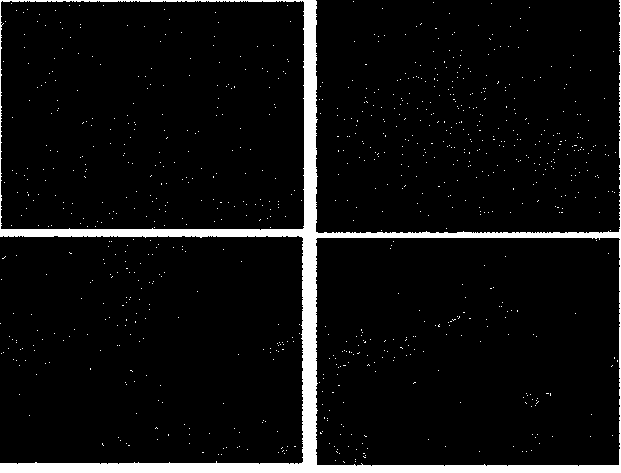Traditional Chinese compound medicament for treating fatty liver disease
A technology of fatty liver disease and traditional Chinese medicine, applied in the direction of drug combination, pharmaceutical formula, organic active ingredients, etc., can solve the problems of preparation controllability, stability troubles, complex ingredients, loss of unique advantages, etc.
- Summary
- Abstract
- Description
- Claims
- Application Information
AI Technical Summary
Problems solved by technology
Method used
Image
Examples
Embodiment 1
[0015] Example 1 Using the high-fat diet-induced fatty liver model in rats and the regression analysis of the uniform design method to obtain the corresponding optimal formula for reducing liver triglyceride content
[0016] 1. Materials and methods
[0017] 1.1 Materials
[0018] 1.1.1 Animals: SD male rats, clean grade, weighing (160±10) g, provided by the Shanghai Experimental Animal Center of the Chinese Academy of Sciences.
[0019] 1.1.2 Main reagents and drugs: polydatin is derived from Polygonum cuspidatum, chlorogenic acid is derived from capillary chrysanthemum, geniposide is derived from gardenia, curcumin is derived from turmeric, Rhizoma Atractylodis Macrocephalae: derived from Atractylodes macrocephalae, purchased from Xi'an Guanyu Biotechnology Co., Ltd.; triglyceride (TG) detection kit was purchased from Zhejiang Dongou Bioengineering Company.
[0020] method
[0021] 1.2.1 Uniform design drug screening experiment: 46 rats were randomly divided into normal g...
Embodiment 2
[0029] Example 2 Using a high-quality diet-induced rat fatty liver model to verify the curative effect of the screened component formula
[0030] 1. Materials and methods
[0031] 1.1 Materials
[0032] 1.1.1 Animals: SD male rats, clean grade, weighing (170±10) g, provided by the Shanghai Experimental Animal Center of the Chinese Academy of Sciences.
[0033] 1.1.2 Main reagents and drugs: ALT detection kit was purchased from Nanjing Jiancheng Institute of Bioengineering. Other materials are the same as "Example 1".
[0034] method
[0035] 1.2.1 Grouping and modeling: 120 male SD rats were randomly divided into a normal group (10 rats) and a modeling group (60 rats). The modeling method was the same as in "Example 1". At the end of the 4th week, the model group was randomly divided into model group, formula group, chlorogenic acid group, Atractylodes polysaccharide group, geniposide group, and Qushihuayu prescription group, with 10 rats in each group. Among them, the dosa...
PUM
 Login to View More
Login to View More Abstract
Description
Claims
Application Information
 Login to View More
Login to View More - R&D
- Intellectual Property
- Life Sciences
- Materials
- Tech Scout
- Unparalleled Data Quality
- Higher Quality Content
- 60% Fewer Hallucinations
Browse by: Latest US Patents, China's latest patents, Technical Efficacy Thesaurus, Application Domain, Technology Topic, Popular Technical Reports.
© 2025 PatSnap. All rights reserved.Legal|Privacy policy|Modern Slavery Act Transparency Statement|Sitemap|About US| Contact US: help@patsnap.com

